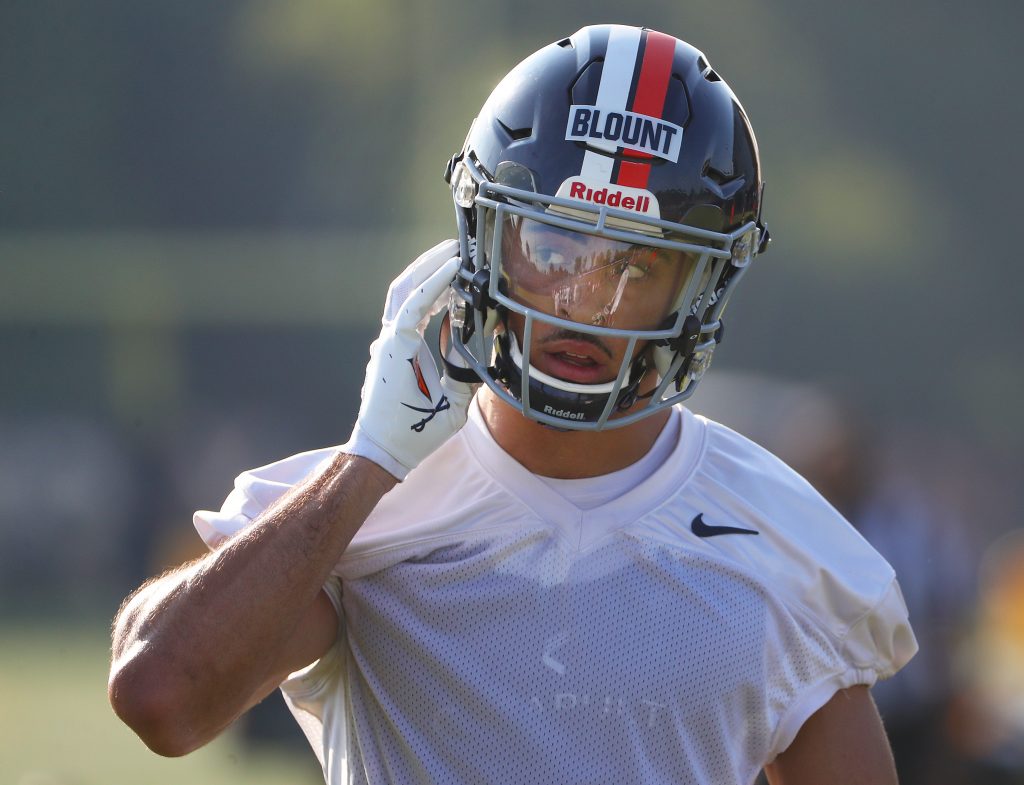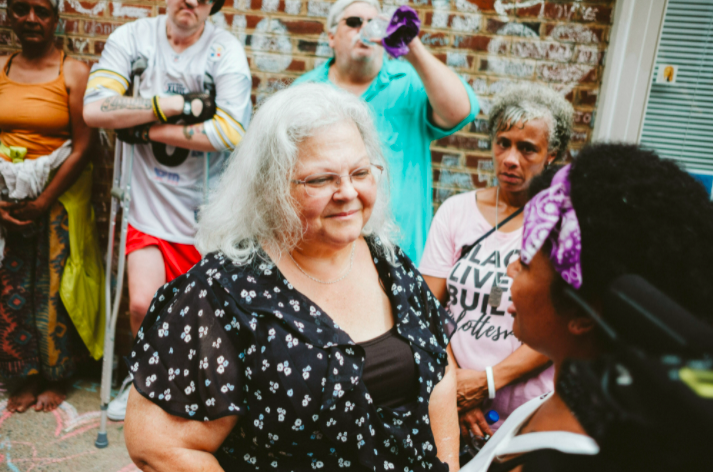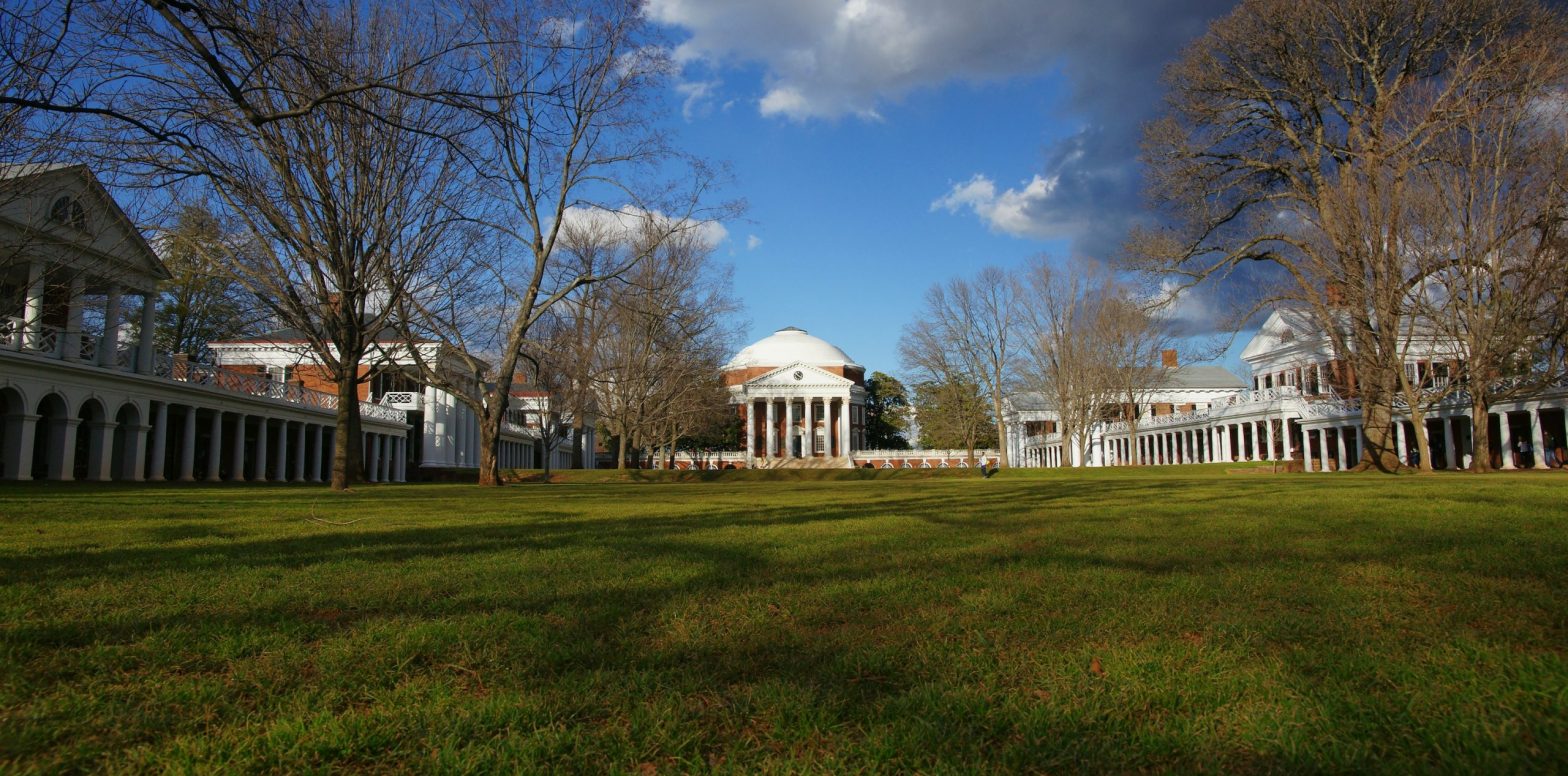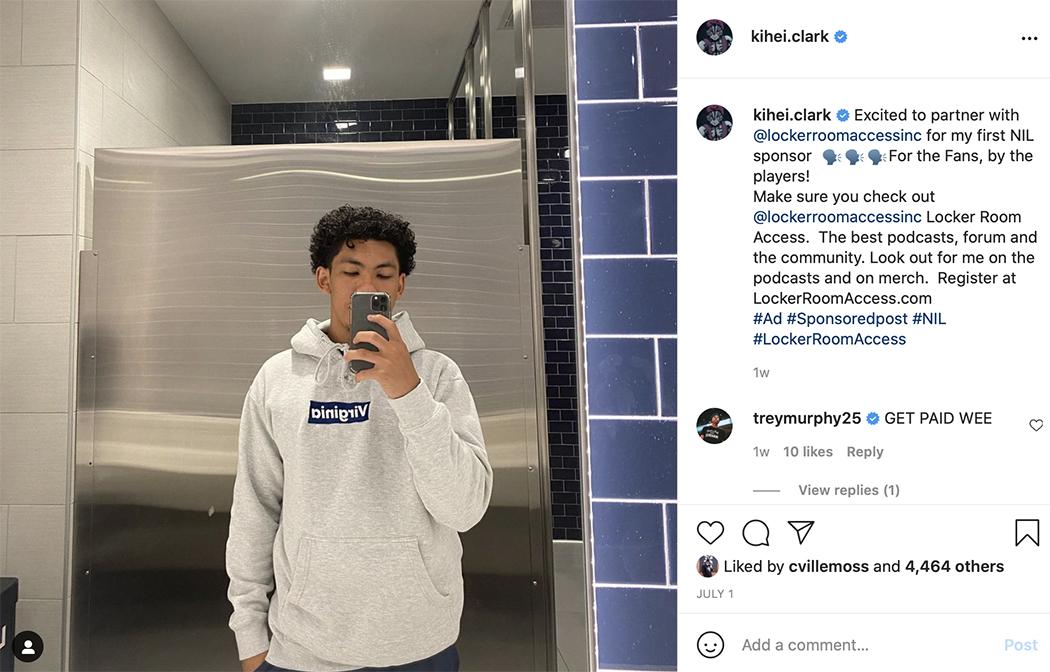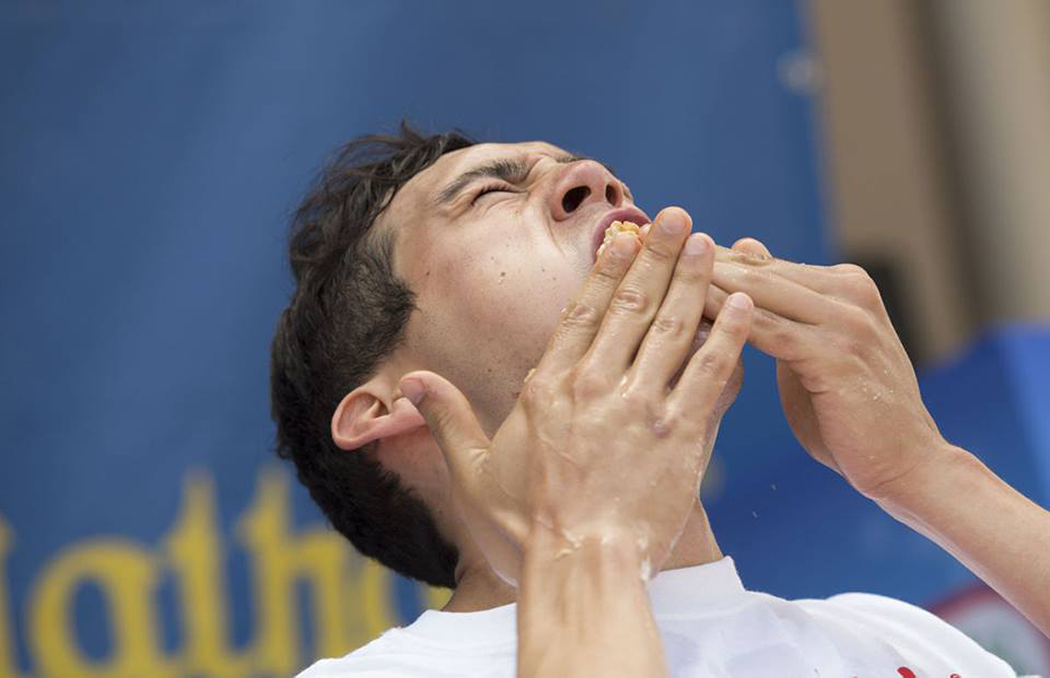Buddy Boeheim goes to the line. Virginia leads Syracuse by two, 29 seconds on the clock. Boeheim makes the first free throw. He makes the second. 69-69. A few seconds later, down at the other end of the court, UVA’s trusted floor marshal Kihei Clark pokes his way into the paint, and whips a pass out to freshman Reece Beekman. Beekman hasn’t made a shot all day. He’s zero for five. But now, with time running out, he’s only got one option: He drains the three as the buzzer sounds.
Beekman sprints down the court, his teammates chasing him and jumping for joy. The UVA men are headed to the quarterfinals of the 2021 ACC men’s basketball tournament.
Or so they thought. As soon as the celebration ended, news broke that someone on UVA’s team tested positive for COVID. The Cavaliers were disqualified from the conference tournament and, a week before the NCAA tournament, were sent back to Charlottesville, where they weren’t allowed to leave their apartments or dorms, and were unable to practice.
The disruption doubtless contributed to the upset that followed: The Hoos secured a 4 seed in the tournament, but fell 62-58 to 13-seed Ohio in the first round. It was an unceremonious end to the Cavaliers’ impressive season, going 18-7 overall and 13-4 in the ACC, winning another ACC regular season championship.
In the offseason, the bad news piled up. The program lost three players to the transfer portal, freshman Jabri Abdur-Rahim and sophomores Casey Morsell and Justin McKoy. Trey Murphy III, Sam Hauser, and Jay Huff headed to the NBA, leaving Tony Bennett with a bare roster.
But, not for long. In addition to four-star recruit Taine Murray of New Zealand, the Hoos landed two big transfers: Jayden Gardner and Armaan Franklin.
Gardner, the 6-foot-6, 246-pound senior forward from East Carolina University, averaged 18.3 points, 8.3 rebounds, and 35.2 minutes per game in 2020-2021. He also shot 47.9 percent from the field, 50 percent from beyond the arc, and 73.7 percent from the line. He was named to the American Athletic Conference first team and the National Association of Basketball Coaches District 24 first team. On a team that doesn’t return a single double-digit scorer from last year, Gardner will be expected to carry a lot of the offensive load.
Franklin, the 6-foot-4, 204-pound junior guard from Indiana University, averaged 11.4 points, 4.1 rebounds, and 2.1 assists per game in the 2020-2021 season. Further, he shot 42.9 percent from the field, 42.4 percent from beyond the arc, and 74.1 percent from the line. If Franklin doesn’t start to begin the season, expect him to come off the bench pretty quickly.
The team still has three veterans from the 2018-2019 championship team, all returning for their fourth year and likely to make an impact. The diminutive Kihei Clark is the team’s elder statesman, entering his senior year as a regular starter. Last year Clark averaged 9.5 points, 2.0 rebounds, and 4.5 assists per game. He made the All-ACC third team in 2019 and was an honorable mention in 2020.
The team’s other veterans haven’t played as much thus far in their careers. Kody Stattmann, the 6-foot-8, 200-pound guard started 10 out of 24 games his sophomore season but only played four games in the 2020-2021 season due to a non-COVID-19 related cardiac issue. In those four games, Stattmann shot 58.3 percent from the field and averaged 3.5 points and 1.8 rebounds per game.
Francisco Caffaro, the 7-foot-1, 242- pound redshirt junior (and an Olympian with Argentina this summer) is ready to take the reins at center. He’ll have big shoes to fill—literally—with the departure of Huff. Caffaro played less than seven minutes per game across just 17 appearances last year.
Another notable returning player is Kadin Shedrick. Shedrick didn’t see much of the floor in 2020, but the 6-foot-11, 231-pound forward had an impressive showing in the Pepsi Blue-White Scrimmage in October. He also scored a career-high 12 points and pulled down a career-best eight rebounds versus St. Francis last December. Expect Shedrick to start.
UVA’s disqualification from the ACC tournament and disappointing finish in the NCAA tournament left a bad taste in the mouths of Wahoo faithful, but this year, the Cavaliers are ready to compete and win. They open the season ranked 25th in the AP poll. We all know what happens when UVA plays with something to prove.
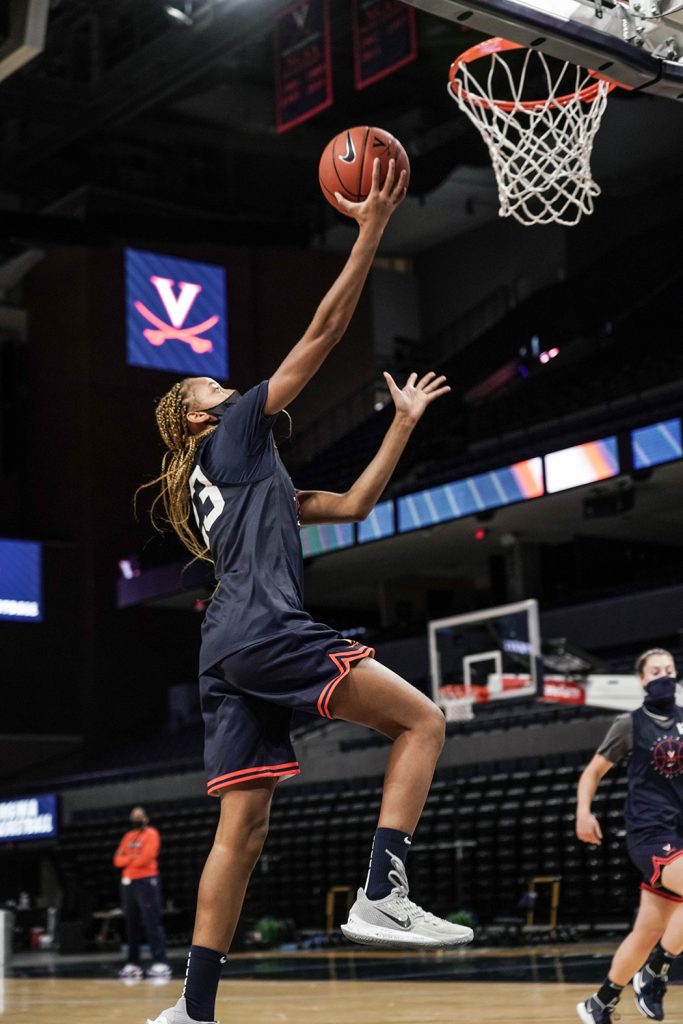
The 2020-21 season didn’t go great for the UVA women’s basketball team. In fact, it barely went at all. The team was hit hard by injuries and COVID complications. After just a few games, Head Coach Tina Thompson was down to six eligible players, and the program decided to call off the season entirely after an 0-5 start. Heading in to 2021, there’s nowhere to go but up.
Thompson, a WNBA hall of famer from her playing days, enters her fourth year in charge of the Cavaliers, without a winning season under her belt, and she’ll have a roster full of fresh faces to work with. Virginia landed five transfers this offseason: Eleah Parker, McKenna Dale, Camryn Taylor, Taylor Valladay, and London Clarkson.
Parker is a graduate transfer from the University of Pennsylvania and two-time Ivy League defensive player of the year. The 6-foot-4 forward averaged a .485 field goal percentage, 8.4 rebounds per game, and had a total of 233 blocks over three seasons at Penn.
Dale is another graduate transfer from the Ivy League. In her 2019-2020 season at Brown (the Ivy League conference opted out of competing during 2020-2021 due to COVID), the 6-foot guard ranked third in conference for points per game (17.0), second in three-point percentage (.385), and first in free throw percentage (.851).
UVA also added two transfers from Marquette, a team that went 19-7 last year before losing to No. 1-ranked UConn in the Big East tournament final. Taylor, a 6-foot-2 junior forward, averaged 12 points, 6.9 rebounds, and 1.7 assists per game during her 2020-2021 season at Marquette. She was named to the 2019-2020 Big East all-freshman team and was a 2020-2021 All-Big East honorable mention. Valladay is a junior guard who averaged 5.2 points and 1.8 assists per game for the Golden Eagles last year.
Virginia’s last transfer is Clarkson, a 6-foot-2 junior forward from Florida State. During her 2019-2020 season at FSU, Clarkson averaged 1.2 points and 1.4 rebounds, and shot 43.8 percent from the floor in an average of 7.5 minutes per game. Clarkson transferred to UVA last winter and received eligibility waivers from the ACC and NCAA, but the season was canceled before she had a chance to play.
Key returning players include Amandine Toi, a graduate guard who played in all 30 games of the 2019-2020 season. She shot 32.1 percent from beyond the arc that year, and averaged 4.3 points and 1 rebound per game. And she started hot in the abandoned 2020 season, hitting five threes in a career-best 23-point performance against Clemson. She toppled previous personal records in the five games of the 2020-2021 season, setting a career record of 23 points against Clemson, including five three-pointers.
“We have a full roster, so that is like ‘woo-hoo!’” Thompson said in a press conference at the ACC media day earlier this month. “That’s a blessing in itself.” Thompson said she’s looking forward to this season’s depth and versatility, something she says is a luxury she hasn’t experienced at UVA yet.
Thompson’s offseason recruiting didn’t end with the transfer portal. She also recruited two-time NBA champion and former NBA assistant coach James Posey to her staff.
“Coach Posey is what we call a purist,” Thompson said in a press release. “He loves all aspects of the game and has played it at the highest level. He brings a championship mentality, a wealth of knowledge, and a teaching spirit, with development being his specialty and passion.”
Posey worked as an assistant coach for the Cleveland Cavaliers from 2014-2019 and has held various coaching positions around the league since. He won NBA championships with the Miami Heat in 2006 and the Boston Celtics in 2008.
With a reshaped roster and revamped staff, the Cavaliers are sure to improve on last year’s showing. After all, they really couldn’t be worse.
First week action
Men
vs. Navy,
Tuesday, November 9, 9pm
vs. Radford,
Friday, November 12, 7pm
Women
@ James Madison,
Tuesday, November 9, 7pm
vs. USC,
Sunday, November 14, 1pm
Faces in the crowd
After playing last season in front of a tightly monitored friends-and-family-only crowd, this year’s UVA teams will have the support of a full John Paul Jones Arena behind them. All fans must show proof of vaccination or a negative COVID test to enter the building, and masks are required.


